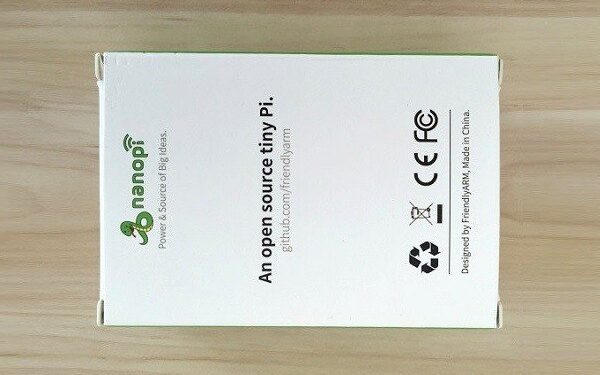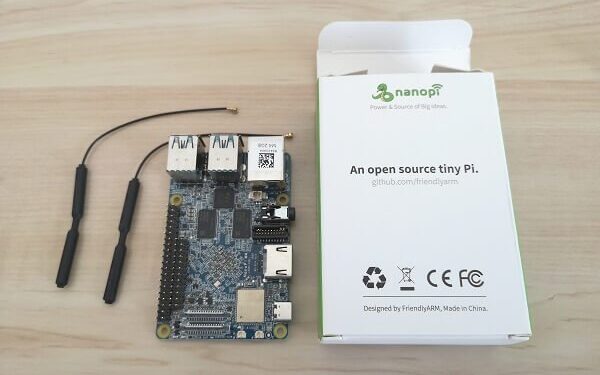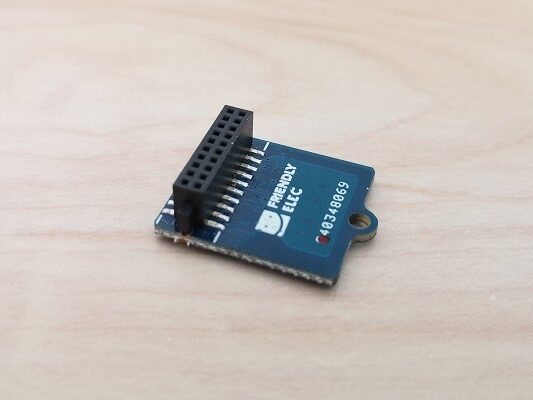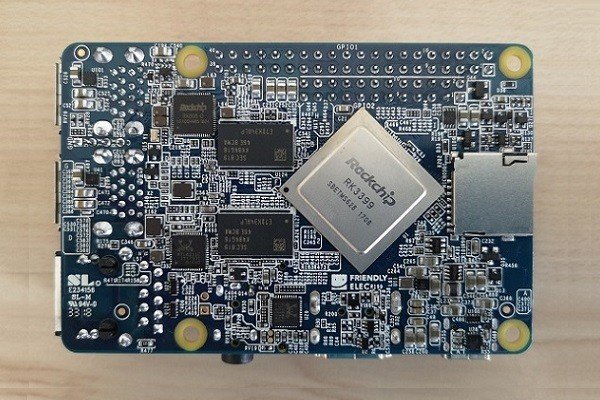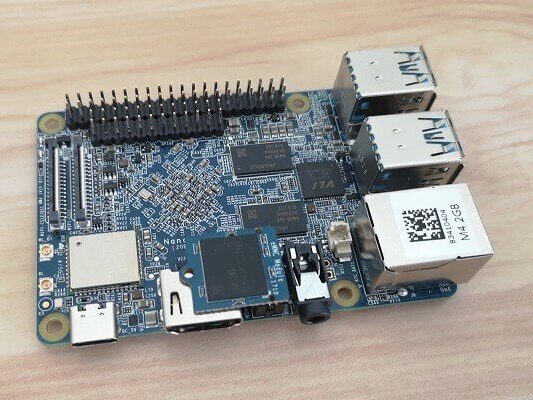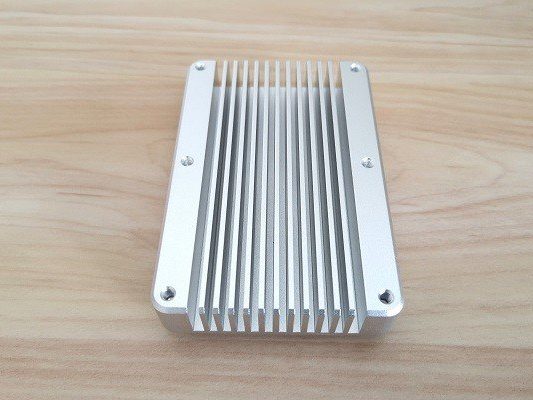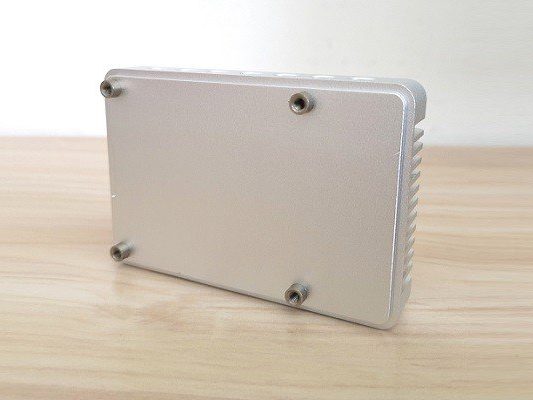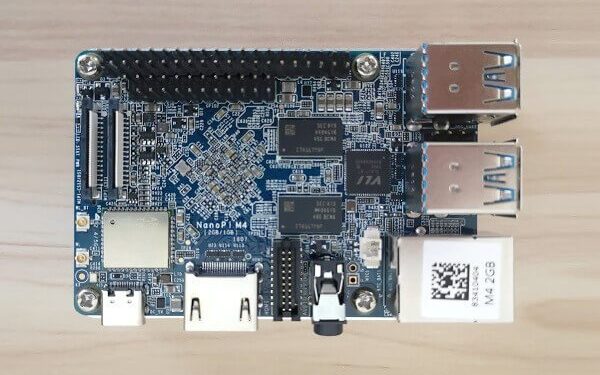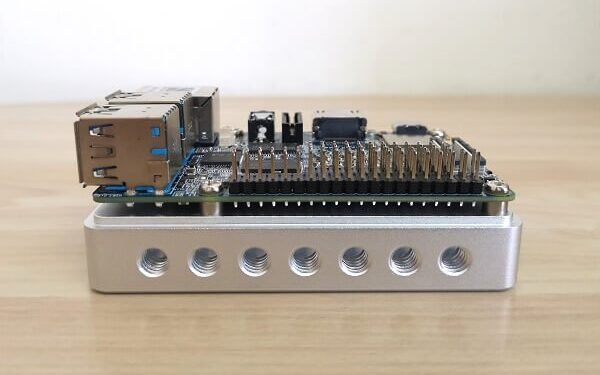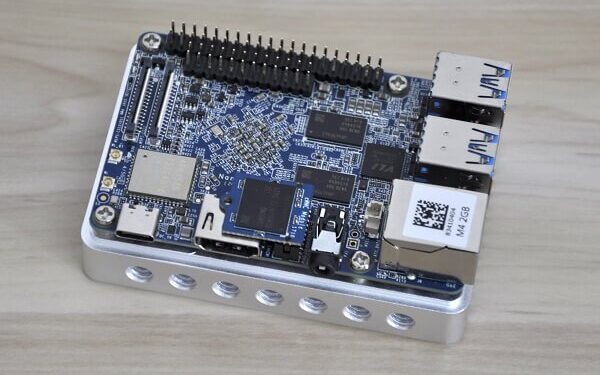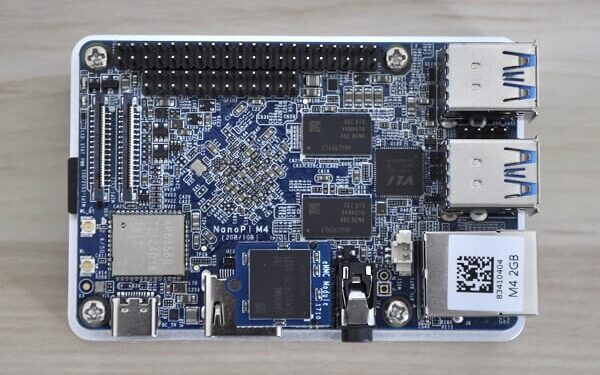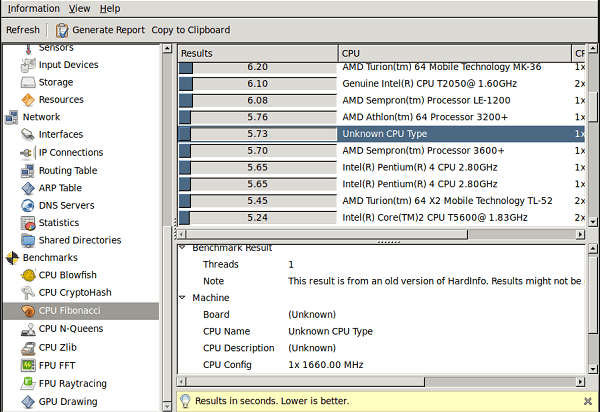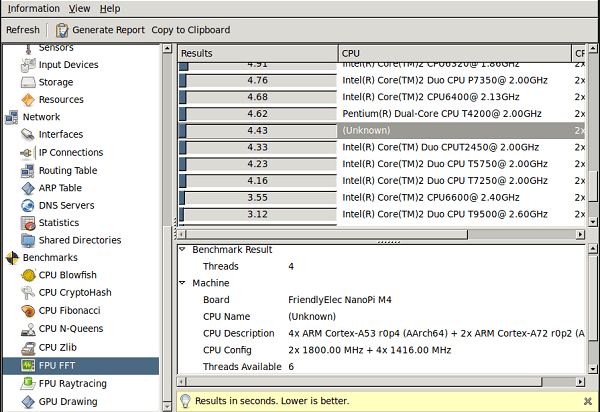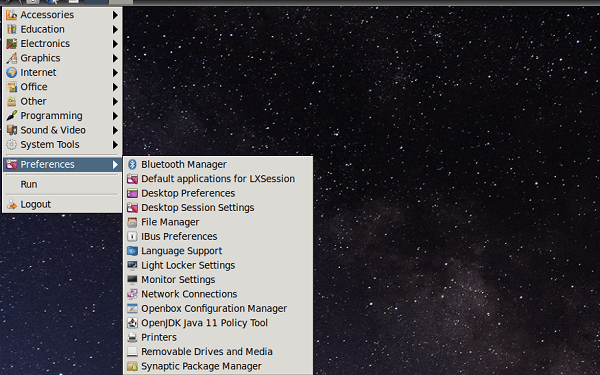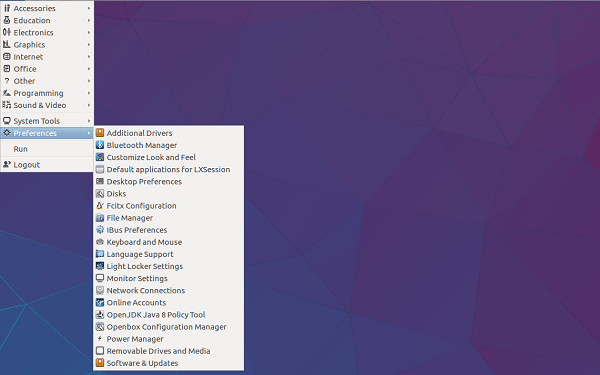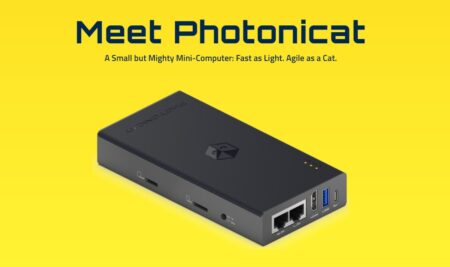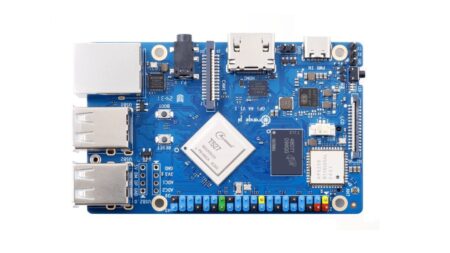- Maybe you missed it? Orange Pi 4 LTS
- NanoPi M4 Review, Specification, and Features.
NanoPi M4
The NanoPi M4 is a single board computer (SBC) based Rockchip RK3399 SoC designed by FriendlyElec company. It features the same form factor as well as ports and interfaces that are compatible with Raspberry Pi 3 Model B+ SBC. Measuring only 85 x 56 mm, making this compact board an ideal platform for rapid product prototyping, including a wide selection of industrial and commercial applications.
The NanoPi M4 has an onboard 2.4G & 5G dual-band WiFi and Bluetooth module, four USB3.0 TypeA host ports, one Gbps Ethernet port, one HDMI 2.0 Type-A port, one 3.5mm audio jack, one Type-C port. In addition, it has an RPi-compatible 40-pin connector which populates dual MIPI-CSI camera interface, PCIe x2, USB2.0, eMMC socket, RTC port and etc.
The NanoPi M4 comes in two editions with different RAM configurations. 4GB RAM LPDDR3 and 2GB RAM DDR2. Both boards can be booted from either a TF card or an external eMMC module (purchased separately). The NanoPi M4 supports Ubuntu Desktop 18.04 (64-bit), Lubuntu l6.04 (32-bit), Ubuntu Core 18.04 (64-bit), Android 7.1, and Lubuntu Desktop with GPU and VPU acceleration. With these rich resources and powerful performance, it can be used in a wide selection of applications, such as machine learning, AI, deep learning, robots, industrial control, industrial cameras, advertisement machines, game devices, blockchain and more depending on your imagination.
NanoPi M4 | 2GB RAM Edition
 NanoPi M4 | 4GB RAM Edition
NanoPi M4 | 4GB RAM Edition
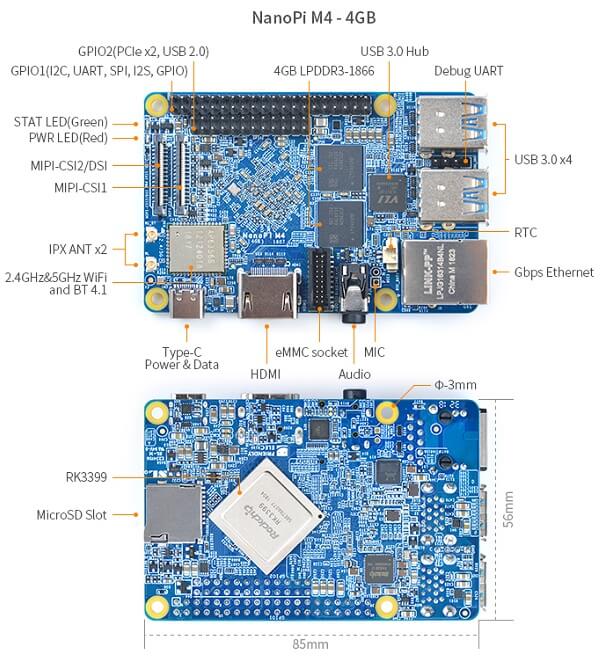
Specification
| CPU | SoC: Rockchip RK3399; CPU: big.LITTLE,Dual-Core Cortex-A72(up to 2.0GHz) + Quad-Core Cortex-A53(up to 1.5GHz) |
| GPU | Mali-T864 GPU,supports OpenGL ES1.1/2.0/3.0/3.1, OpenVG1.1, OpenCL, DX11, and AFBC |
| VPU | 4K VP9 and 4K 10bits H265/H264 60fps decoding, Dual VOP, etc |
| DDR3 RAM | Dual-Channel 4GB LPDDR3-1866, or Dual-Channel 2GB DDR3-1866 |
| Storage | Onboard eMMC Socket (Module is purchased separately) |
| Network | Native Gigabit Ethernet |
| USB Host | USB 3.0: four USB 3.0 Type-A ports; USB Type-C: Supports USB2.0 OTG and Power input |
| WiFi: | 802.11a/b/g/n/ac, Bluetooth 4.1, Wi-Fi and Bluetooth combo module, dual antenna interface |
| Audio input/output Port | Audio Out: 3.5mm Dual channel headphone jack, or HDMI; Audio In one microphone input interface |
| Debug Serial Port/UART0 | One Debug UART, 4 Pin 2.54mm header, 3V level, 1500000bps |
| Video Input | one or two 4-Lane MIPI-CSI, dual ISP, up to 13MPix/s, supports simultaneous input of dual camera data |
| Video output: | HDMI: HDMI 2.0a, supports 4K@60Hz,HDCP 1.4/2.2; one 4-Lane MIPI-DSI |
| microSD Slot | microSD Slot x 1 |
| GPIO | 40Pin GPIO Extension ports:3 X 3V/1.8V I2C, up to 1 x 3V UART, 1 X 3V SPI, 1 x SPDIF_TX, up to 8 x 3V GPIOs, 1 x 1.8V 8 channels I2S. 24Pin Extension ports:2 independent native USB 2.0 Host, PCIe x2, PWM x1, PowerKey |
| LED | 1 x power LED and 1 x GPIO Controlled LED |
| RTC | 2 Pin 1.27/1.25mm RTC battery input connector |
| PCB Dimension | 8 Layer, 85 mm x 56 mm |
| Power | DC 5V/4A |
| Working temperature | 0℃ to 80℃ |
| OS Support |
|
| Kernel version | Linux-4.4-LTS U-boot-2014.10 |
The Package
Unboxing Main Package (Basic Package)
Package Content:
- 2x Wire WiFi Antennas.
- 1x NanoPi M4 Board.
NanoPi M4: A Complete Kit, Including a Metal Case
NanoPi M4 | All of the Items
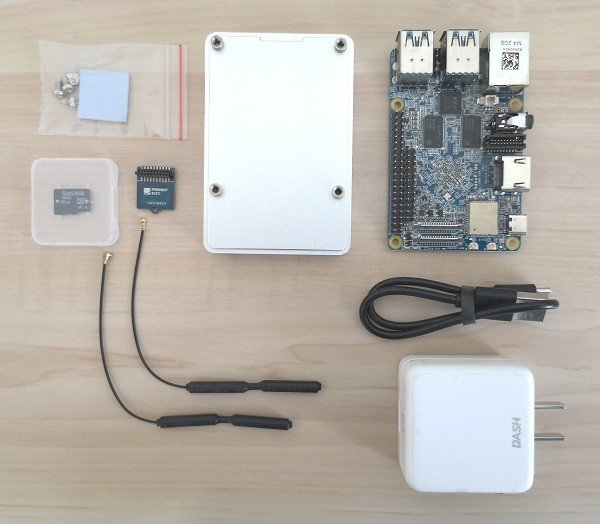
Quality
All items, including extra accessories, came well-packaged and in excellent condition. The only small thing that was missing for me was the spec sheet paper usually added inside the board package, summarizing the hardware specs and explaining the board’s basic operation to a none geek person.
NanoPi M4 | Board view
Storage Space
To make the M4 board cost-effective and flexible for the end user FriendlyElec incorporated an onboard eMMC socket that allows you to add a 16GB eMMC Module for a price of $12.00. it’s not a “must have” item, but if you want to gain quicker file read/ write speeds vs. loading all of them from a Micro SD Card it a definitely worth investing a few dollars.
NanoPi M4 | With eMMC Module
Hardware
Without digging into all the board details, if are planning on using this board as a type of Mini PC or a workstation, the hardware will provide above-decent performance suitable for running OpenOffice, Apps, surfing the web, and also watching 4K videos. The NanoPi M4 comes in two types of variants with different configurations, 2GB, and 4GB. The 2GB RAM will be enough for doing all and much more. Having said that, my best experience was running FriendlyDesktop 18.04 (64-bit) operating under light resources LXDE desktop environment worked much smoother compared to Lubuntu 16.04 (32-bit) and the general feeling was of no visible lags while moving windows across the screen or opening apps in the background.
Cooling
One of the main highlights of this package and worth considering buying is the passive cooling Heatsink unit which costs $6.99. It’s composed of an aluminum block slightly larger than the PCB dimensions, and a set of 4 Philips-type screws along with a silicon thermal pad. Assembling the board is very simple. The back side of the board is placed above the heatsink, where the main RK33999 chip is located while applying pressure against it.
NanoPi M4 | Heatsink Unit
NanoPi M4 | Board With Heatsink
NanoPi M4 | Putting All together
Operation Temperature & Power Consumption
The power consumption range for the NanoPi M4 is approximately 2.2W in Idle mode, without overloading system resources. In more moderate usage 7W is normally an acceptable range for RockChip Hardware. As for CPU temperatures, the normal standard range is between 36-44C.
Power Consumption | In Idle Mode
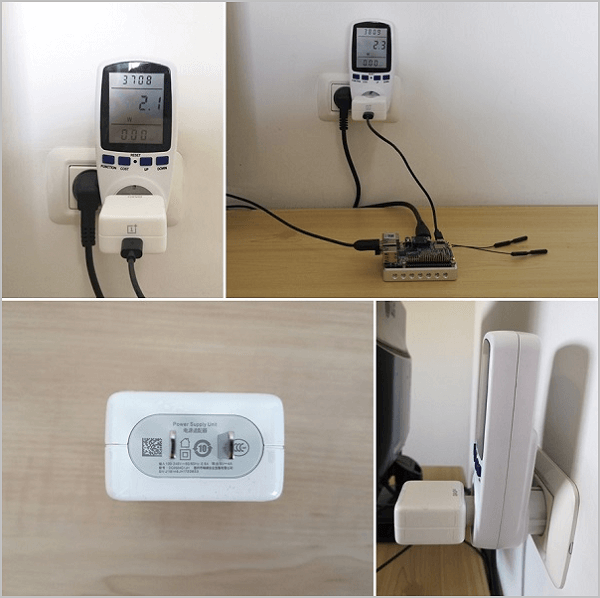
CPU Temperature
pi@NanoPi-M4:~$ cat /sys/class/thermal/thermal_zone*/temp 36875 36250
Software Support & Benchmarks
If you are planning on using this board as a type of Mini PC or a workstation, the RK3399 hardware will provide the above-decent performance suitable for running OpenOffice, Apps, surfing the web, and also watching 4K videos. The NanoPi M4 comes in two types of variants with different configurations: 2GB, and 4GB. The 2GB RAM will be enough for doing all and much more, but if you need extra RAM the 4GB edition will cost you an additional $30. Having said that, my best experience was running Friendly Desktop 18.04 (64-bit) operating under light resources LXDE desktop environment worked much smoother compared to Lubuntu 16.04 (32-bit) and the general feeling was of no visible lags while moving windows across the screen or opening apps in the background.
Benchmarks
Based on the following benchmark test results performed under Friendly Desktop 18.04 environment, the Hardware performance was pretty good for a $65 SBC (Single Board Computer) with processing power that is slightly lower than a low-end Desktop PC.
NanoPi M4 | Benchmarks
NanoPi M4 FriendlyDesktop
NanoPi M4 Lubuntu
Final verdict
I am extremely pleased with the overall quality of all the components in the package, as well as the smooth performance and stability of the board on Ubuntu GUI. In conclusion, this SBC is truly excellent, and I strongly urge you to make a purchase.
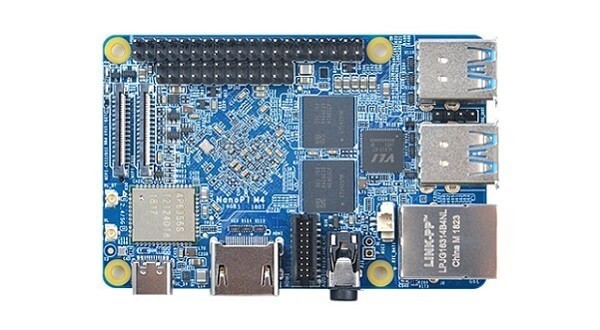

 NanoPi M4 | 4GB RAM Edition
NanoPi M4 | 4GB RAM Edition

